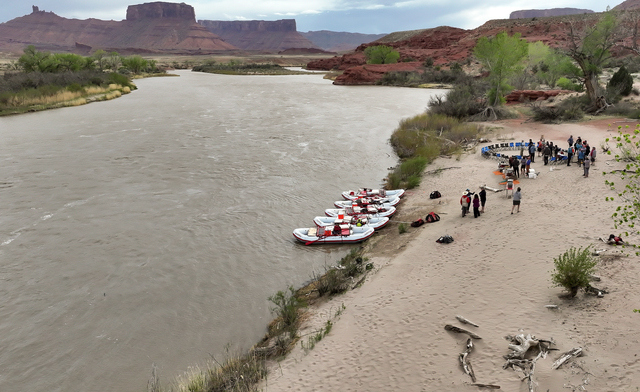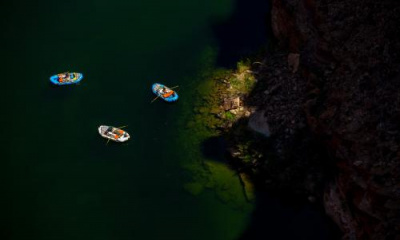ST. GEORGE — The award-winning Great Salt Lake Collaborative is expanding to cover the Colorado River, and St. George News is among the newsrooms kicking off this new reporting initiative.
Called the Colorado River Collaborative, the organization is made up of 11 Utah media partners that have agreed to report on the river, its tributaries and destinations. Stories will explore how Utahns are impacted by the river and how they can address a dwindling water supply in the face of drought, climate change and rapid growth.
As a solutions journalism initiative, Collaborative stories will also explain what can be done to adapt to the new realities facing the river, what actions are being taken and why.
This expanded reporting scope is made possible due to a founding gift from the Utah State University’s Janet Quinney Lawson Institute for Land, Water, & Air. All editorial decisions are made independently by member news organizations in accordance with their respective editorial policies.
“USU’s Janet Quinney Lawson Institute for Land, Water, and Air is thrilled to partner together to create this new group,” said Anna McEntire, managing director of the institute. “We are excited to see additional attention paid to an issue that’s often overlooked, especially in northern Utah.”
The group is based on the previous success of the Great Salt Lake Collaborative, which has been responsible for much of the local and shared coverage of Great Salt Lake in the past two years. The collaborative’s work resulted in more than 600 stories and articles over the past two years and received national recognition.
“If I were to name the two most significant water challenges in Utah, they would easily be the Great Salt Lake and the Colorado River,” said Brian Steed, executive director of USU’s Janet Quinney Lawson Institute for Land, Water, and Air. “Right now, most everyone in Utah knows about the threat of toxic dust from the Great Salt Lake, but far fewer understand the threat of not enough water in the Colorado River. These are challenges we’re going to have to figure out, and we’ll need as much research, information, coordination, and awareness as we can get.”
Media partners of the Colorado River Collaborative include Deseret News, Fox 13, KSL.com, KSL TV, KUER, Moab Times-Independent, PBS Utah, RadioWest, The Salt Lake Tribune, St. George News and Utah Public Radio. USU’s Janet Quinney Lawson Institute for Land, Water, and Air is partnering by providing reporter resources for content creation, and editorial decisions are made independently by each individual newsroom.
Journalists and water experts make a stop while rafting the Moab Daily section of the Colorado River with Holiday River Expeditions during a kickoff event for the Colorado River Collaborative in Grand County on Thursday, April 25, 2024 | Photo by Kristin Murphy/Deseret News, St. George News
The new collaborative was officially launched April 25-26 at a conference in Moab. The Colorado River Collaborative gathered 17 Utah journalists — including digital, TV and radio reporters and photojournalists — and a dozen panelists to discuss the river’s current state, the pressures of growth, the importance of the river for recreation and the future of agriculture. The conference was presented by the Institute for Land, Water & Air and The Water Desk at the University of Colorado Boulder, a nonprofit that supports journalists who cover water in the west.
The collaborative’s emphasis will be on exploring the importance of the river and the impacts of its decline on Utahns. Much of the U.S. news coverage about the river focuses on water users in the Lower Basin states — California, Arizona and Nevada. But water from the Colorado River is crucial to the fate of Utah, which grew faster than any other state from 2010 to 2020, and whose population is projected to jump from 3.3 million to 5.5 million in 2060.
According to the Colorado River Authority of Utah, the river is a key source of municipal water for Utah’s most densely populated counties and the rapidly growing southwestern region of the state. The river and its reservoirs fuel a recreation industry that generates $750 million in economic activity. Federally recognized tribes within Utah have claims to the water for agricultural, cultural and economic purposes. Its hydropower dams, including one located in Utah, are a significant source of electricity in the southwestern U.S. and Mexico.
For more information, contact










